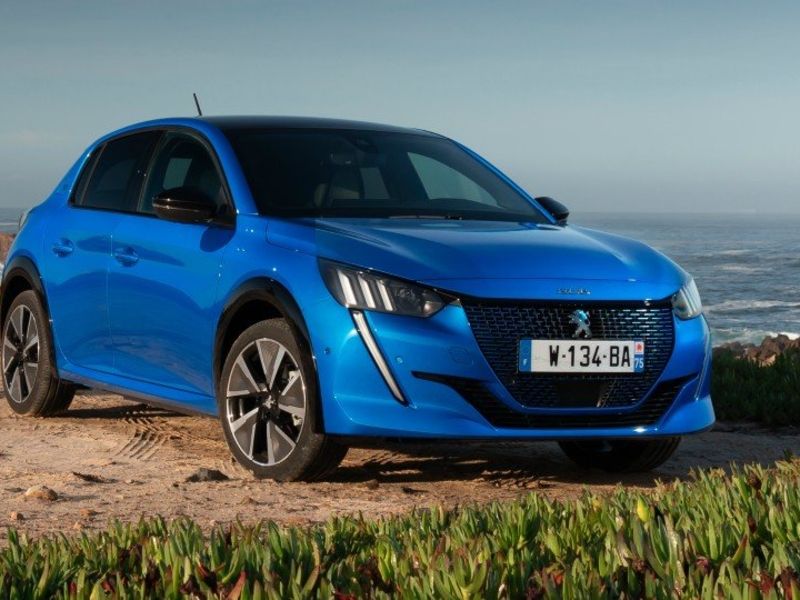
Stellantis will go “full throttle” on battery-electric vehicles to meet emissions goals in Europe and the U.S., as hybrid powertrains eventually “disappear,” CEO Carlos Tavares said.
Tavares has not yet committed Stellantis, which has 14 brands and home bases in France, Italy, Germany and the U.S., to a date when it will sell only zero-emission vehicles but, he said, “The societies in which we operate will trend toward a ban on internal combustion engines.”
Automakers are racing to develop electric vehicles to meet tighter CO2 emissions targets in Europe, and this week Volvo joined a growing number of automakers including Ford of Europe, Jaguar and Bentley aiming for a fully electric lineup in the near future.
“We are going full throttle on battery-electric vehicles, as we believe the mix of sales within electrified vehicles will move very fast to pure BEVs,” he said this week at a financial results conference for the two automakers that combined to form Stellantis, PSA Group and Fiat Chrysler Automobiles.
“We aren’t thinking we’ll still have mild hybrids or plug-in hybrids,” he said, because of bans on selling internal combustion engines, already announced in countries such as the U.K.
A presentation he showed said that Stellantis, which started operations in January, would be emissions compliant from “Day 1” and had a “road map” to meeting targets through 2025.
Stellantis, whose brands include Opel, Jeep, Ram and Maserati, plans to have full-electric or hybrid versions of all of its vehicles available in Europe, as well as light-duty vehicles in the U.S. by 2025, broadly in line with plans at rivals such as Volkswagen and Renault-Nissan, although Stellantis has further to go to meet that goal.
Tavares said Stellantis will launch 10 additional “high voltage” vehicles (full electric and plug-in hybrid) this year, including full-electric variants of light-commercial vans.
In contrast to mass-market competitors such as Toyota Motor Corp. and Renault that have substantial full-hybrid offerings, PSA has focused on plug-in hybrids and full-electric vehicles; FCA has just begun offering Jeep plug-in hybrids and has just one new EV, the Fiat New 500.
Morgan Stanley analyst Harald Hendrikse said Stellantis’ electrified vehicle portfolio is a little-known strength, citing two dedicated EV platforms, supply chain arrangements in electric motors, transmissions and battery cells, and its model lineup in Europe.
“Few other OEMs have all of this in place, in 180-degree contrast to some investors’ views,” he wrote in a report.
Tavares pointed to the coming e-VMP platform, which will appear first on the next-generation Peugeot 3008 compact utility vehicle in 2023, as an example of what customers expect from a Stellantis electric vehicle. The platform can accommodate a 100 kilowatt-hour battery and offer more than 600 km (373 miles) of range, he said.
“I am challenging my engineers hard” to find more range, he said. “We are working very hard on the energy storage capabilities, but also on the energy efficiency ratio of the electric motors, on transmissions, on aerodynamics.”
The e-VMP platform will be used on compact and midsize full-electric vehicles, while an adapted version of the multi-energy CMP platform called e-CMP will cover small and compact cars.
The other main axis of Stellantis’ electrification strategy is a vertically integrated supply chain, with the aim of controlling engineering and manufacturing — and thus cost, quality and performance for the major components of an electric powertrain. Tavares has said in the past that the arrangement could cut 10 percent from the cost of a full-electric vehicle.
The strategy includes a joint venture with Nidec on electric motors, with production starting next year; a joint venture with Punch Powertrain to produce an electrified dual clutch transmission for plug-in hybrids by the end of 2023; and ACC, a venture with Total/Saft that will build battery cells starting in 2023.
Tavares described PSA’s investments in electrification as a “blessing for Stellantis.” “All of this is going to be available for FCA Europe, which is, I think, very good news to improve very quickly our sales performance.”
Until FCA brands such as Fiat and Jeep increase their level of electrification, an EU emissions pooling arrangement with Tesla Inc. will remain in place. Stellantis CFO Richard Palmer said FCA spent 300 million euros ($358 million) in 2020 to buy regulatory credits in Europe, mostly through the CO2 pool with Tesla; he said that “a similar amount, down but not significantly” will be spent in 2021.
Tavares said Stellantis was entering a crucial period for mass adoption of electric vehicles. “The battle will be within the next three to four years,” he said, “on to what extent did we remove the range anxiety factor from the BEV world, and to which extent are we able to make that affordable in an attractive package.”
Reuters contributed to this report.